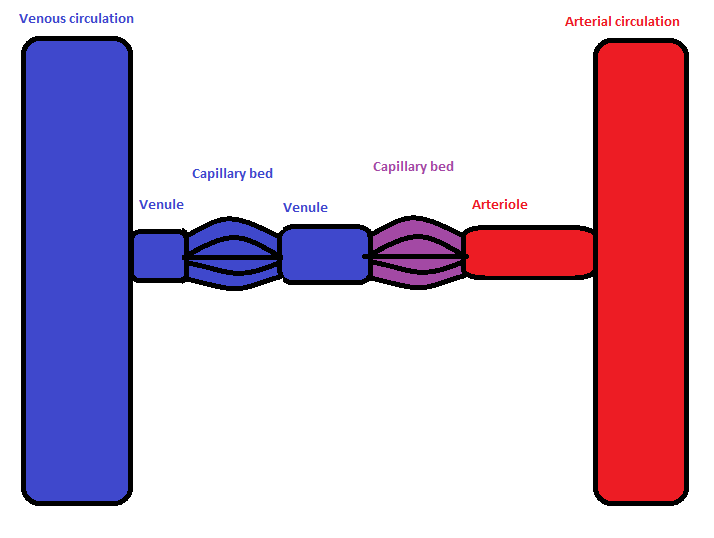- Budd Chiari Syndrome (BCS) is related to an obstruction of the hepatic veins that drain the liver (venous outflow tract at the hepatic veins or the inferior vena cava).
- The obstruction leads to hepatic congestion, release of free radicals, oxydative injury and ischemic necrosis (death of liver tissues due to stop of blood circulation).
- Frequency remains largely unknown but estimates range between 1/50,000 and 1/100,000.
- This condition is associated with a high risk of complications and death due to portal hypertension and liver failure.
- Most cases of BCS are related to thrombosis resulting from one or several prothrombotic conditions.
- Factors that confer a predisposition to the development of the Budd–Chiari syndrome, including hypercoagulable states, both hereditary and acquired, and a variety of other causes, can be identified in about 75 percent of patients.
- Myeloproliferative disorders are associated in approximately 50% of cases, and represent the leading cause of primary BCS. Myeloproliferative disorders is the name for a group of conditions that cause blood cells -platelets, white blood cells, and red blood cells- to grow abnormally in the bone marrow.
- Other acquired [ e.g. antiphospholipid syndrome (about 10%) or paroxysmal nocturnal hemoglobinuria (about 2%)] and inherited conditions are the cause in a smaller proportion of BCS.
- Behcet’s disease (BD) is found in approximately 5% of patients with BCS in western countries. BD was reported in 9% of BCS patients in Turkey, making it the third cause of the disease in that country, and 13% of patients in Egypt.
- Some BCS results from tumour invasion into the lumen or compression of the vein by an expansive lesion.
- The principle manifestations of BCS are ascites (accumulation of liquid in the abdomen) leading to undernutrition and renal insufficiency, gastrointestinal haemorrhage (intestinal bleeding) due to portal hypertension (high pressure in some digestive veins), and hepatic insufficiency resulting in encephalopathy (confusion, altered level of consciousness, and coma) and severe infections.
- Diagnosis can usually be established by non-invasive means through imaging of the hepatic veins and the inferior vena cava (Doppler ultrasound, CT-scan and MRI) but requires a radiologist with sufficient experience and with an awareness of the potential diagnosis.
- The natural course of the disease is very severe (less than 10% of patients survive for more than 3 years without treatment). At present, when the diagnosis is made quickly and treatment is initiated rapidly, the survival rate is 90% at 5 years.
- Treatment approaches include correction of the factors leading to an increased risk of thrombosis, long term anticoagulant therapy, recanalisation of the obstructed veins by interventional radiology, TIPS (transjugular intrahepatic portosystemic shunt i.e a venous shunt) and liver transplantation in case failure of other treatment methods.
Sources: Orphanet Journal of Rare Diseases / Orphanet / New England Journal of Medicine
